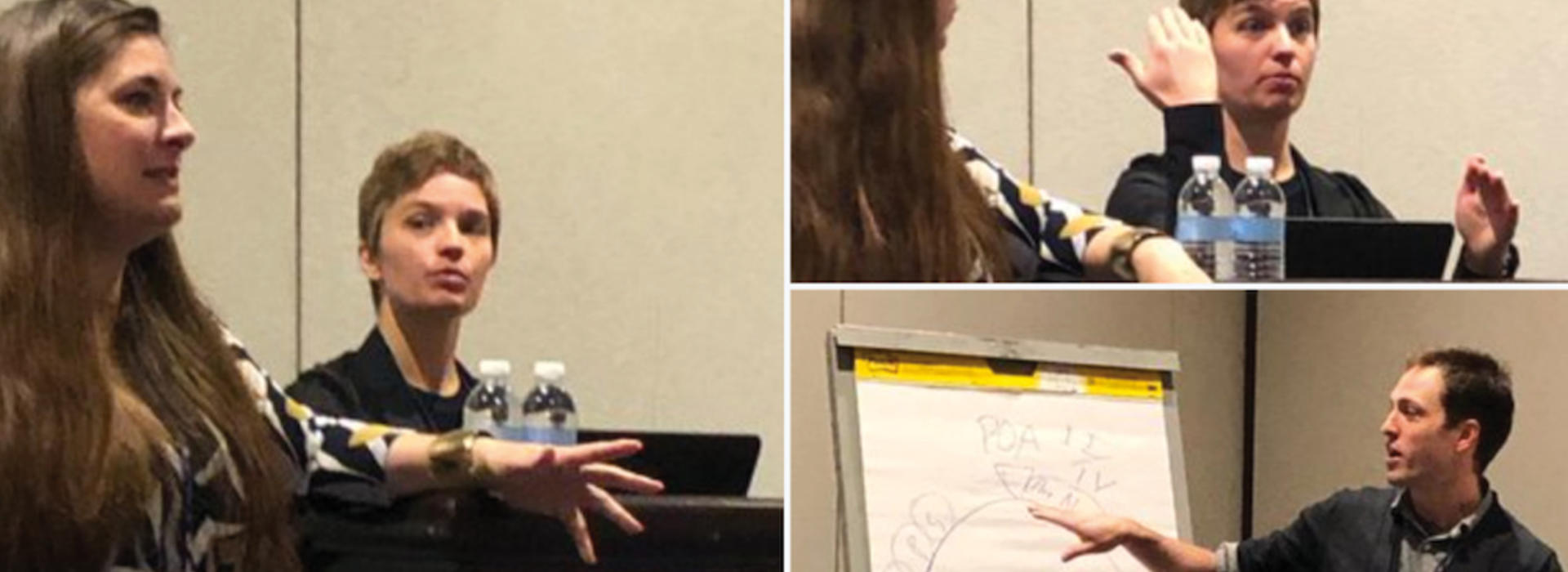
New Framework Teaches Better Doctor-Patient Conversations During a Personal Crisis
Conducting a medical interview, including collecting the patient’s narrative story, is a critical skill across medical disciplines. For psychiatry in particular, understanding how to approach and connect with a patient in distress often means stepping outside of set interview processes and adopting a more flexible, holistic approach.
“We provide education to prepare anyone who may be communicating with a person in distress, especially in the setting of caring for people with suicidal thoughts or self-injurious behaviors,” said Kaz Nelson, MD, associate professor in the University of Minnesota Medical School’s Department of Psychiatry and Behavioral Sciences. “Psychiatry trainees require special training and supervision to practice these techniques. We noticed that all clinicians would benefit from learning these skills, which are not commonly taught across specialties.”
To teach students how to conduct a successful clinical interview with people experiencing distress, Dr. Nelson and team members from the Psychiatry Education Research Lab (PERLab), developed one of its most impactful projects, “The Minnesota Arc: a New Model for Teaching the Psychiatric Interview to Medical Students Serving on Their Psychiatry Clerkship.” The Minnesota Arc framework, recently published in the journal Academic Psychiatry, is taught to U of M Medical School students as part of the required curriculum and has been shared at national meetings, workshops and with psychiatric educators.
“Many resources and curricula describe components of an ‘ideal’ patient interaction, sequence of events and specific questions to ask in various situations,” said Lora Wichser, MD, assistant professor in the Department of Psychiatry and Behavioral Sciences and one of the paper’s co-authors. “The Minnesota Arc is different from these introductory resources in that it accounts for situations in which the patient may be experiencing distress. The Minnesota Arc is a conceptual framework to guide the interaction, which is more flexible and responsive to the patient’s needs and state of mind.”
Dr. Nelson gives an example – if a patient is experiencing a personal crisis, is tearful and feels like their world is ending, imagine following introductory guidance and inquiring, “How are you today?”
“Anyone can see that this question doesn’t fit the circumstance, even though it’s how we are instructed to begin interactions with patients,” Dr. Nelson said. “Introductory instructional curricula assumes that the patient is seeking help and has trust in the care being provided. The reality is people have many barriers to engagement in medical care, and a more nuanced, patient-centered approach is often required.”
Connecting on a Personal Level
The Minnesota Arc teaches students to advance their approach beyond an introductory level and attend to what the person in front of them might need in the moment.
“In our framework, we teach care providers to mindfully observe the clinical interaction and to first actively acknowledge the patient’s legitimate beliefs, hopes and needs and continue to do this until the patient is in a state of mind where they are empowered to participate in responding to questions and exploring diagnosis and treatment options,” Dr. Nelson said. “This framework supports clinicians to see the big picture and account for all these different factors that we experience in real life that are different from the textbook.”
The Minnesota Arc framework includes three primary components:
-
Building a relationship and gathering information
-
The point of alliance
-
Diagnosis and treatment planning
Information gathering involves more than just reciting questions and, instead, provides a patient-centered opportunity for the interviewer to earn trust and validate the patient’s experience, perspectives and stated needs.
“After students incorporate this technique, they’re able to talk to somebody about what’s important to them and then figure out a way to weave in some of these important factors while not missing the big picture,” said Jonathan Homans, MD, assistant professor in the Department of Psychiatry and Behavioral Sciences and one of the paper’s co-authors. “The difference for the students is that they’re empowered to do this well. The difference for the patients is miraculous.”
The point of alliance is reached when a patient expresses trust in the provider, which can be highly nuanced. Once this point is reached, the provider can begin sharing their assessment and start the process of shared decision-making to develop a treatment plan with the patient.
“Many patients experience a positive transformation when we prove we are listening and that we see their unique experience, perspectives and needs as legitimate,” Dr. Nelson said. “It’s rewarding for patients to be empowered to co-produce their healthcare. Mindfulness and attention to the potentially therapeutic nature of the patient interaction is important in medicine in general, but especially psychiatry, and the Minnesota Arc framework can provide more structure around this process.”
Beyond a Psychiatric Framework
“We’ve integrated this content into the ‘Human Behavior’ and ‘Becoming a Doctor’ courses, as well as the psychiatry rotations during the third and fourth years of medical school,” Dr. Homans said. “We’ve been able to get a pretty broad reach to all of our medical students, regardless of what specialty area they’re going into.”
While The Minnesota Arc is valuable for anyone entering medicine, it’s also applicable to other disciplines, and the PERLab has been invited to teach the framework to the College of Veterinary Medicine and some of the University’s grant writing teams.
“If people can learn this technique, understand it and practice it, it results in feeling helpful and caring during stressful or conflictual interaction,” Dr. Nelson said. “If you have an understanding of the impact of stress and distress on another person’s brain, you can apply this knowledge to interact in a therapeutic manner.”
The PERLab, established in 2020, was inspired by Tolulope Odebunmi, MBBS, a third-year physician-scientist resident in the Department of Psychiatry and Behavioral Sciences. Dr. Odebunmi’s intersecting interests in psychiatry education and research solidifies the collaboration.
“We really want to have a clear understanding of the threshold of excellence, and better standardization is our responsibility as a field,” Dr. Nelson said. “We’re at the leading edge of that.”